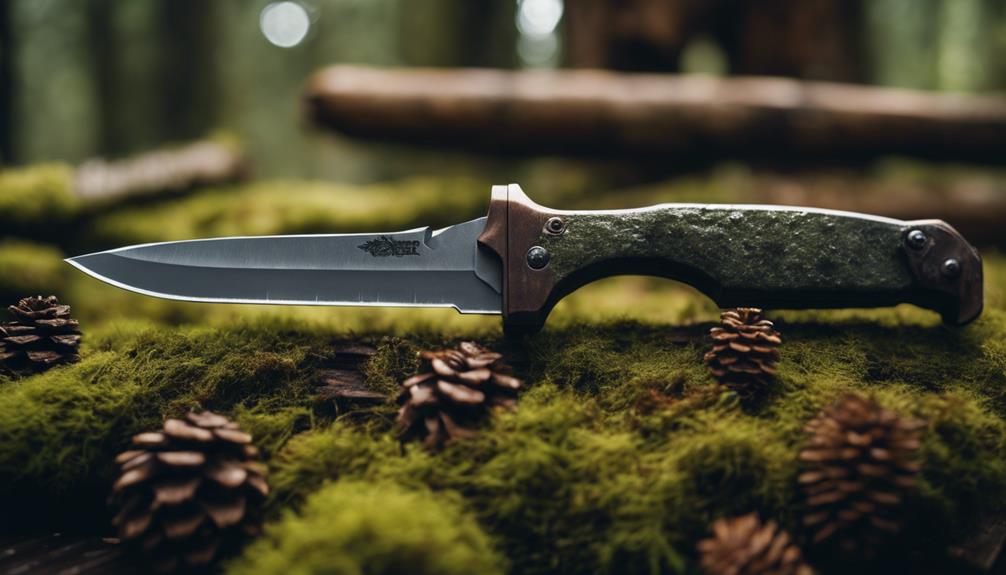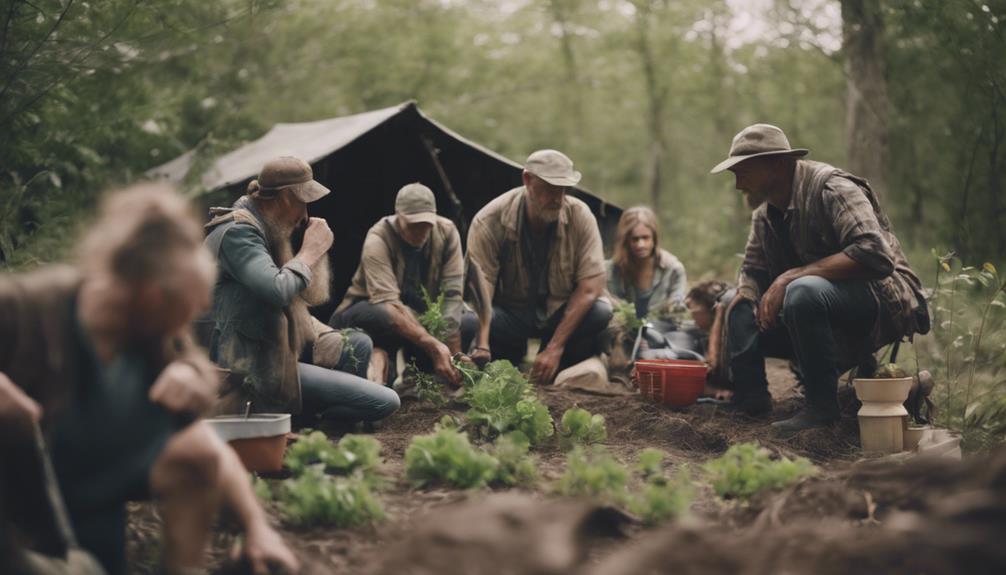Mastering life-saving survival knots is crucial for outdoor enthusiasts and those preparing for emergencies. The Bowline Knot, revered for its strength and reliability, creates a secure loop that remains intact under load. The Poachers Knot excels in trapping scenarios, providing a tightening grip on prey. Connecting ropes of different diameters is made easier with the Sheet Bend, which stays effective even when wet. These knots enhance safety while maneuvering through challenging situations. Understanding their unique applications is essential for effective outdoor practices. Discovering various techniques will greatly bolster your survival skills.
Key Takeaways
- The Bowline Knot is essential for creating a secure, non-slipping loop, ideal for rescue operations and outdoor activities.
- The Poachers Knot is effective for trapping scenarios, maintaining a secure grip on prey under load.
- The Sheet Bend Knot securely connects ropes of varying diameters, making it useful for joining different types of cordage.
- Mastering these knots enhances safety and preparedness in emergencies, camping, and survival situations.
The Bowline Knot
The Bowline Knot, often referred to as the 'King of all knots,' is an important tool in both nautical and survival contexts, known for its ability to create a secure, non-slipping loop essential for rescue operations.
Traditionally utilized by sailors, this knot is renowned for its reliability and strength under load, making it indispensable in emergency scenarios where safety is paramount.
Its design allows for easy tying and untying, even after bearing significant weight, which is critical during stressful situations.
In addition, the Bowline Knot can be tied with one hand, enhancing its practicality in pressing moments.
Mastering this knot not only prepares individuals for various outdoor activities but also equips them with a crucial skill for potential life-saving situations.
Tying the Bowline Knot
Learning to tie the Bowline Knot involves a straightforward sequence of movements that guarantees the creation of a secure and reliable loop.
Begin by forming a small loop near the end of the rope.
Next, take the longer end of the rope and pass it upward through this loop.
Then, wrap this end around the standing part of the rope from right to left.
After that, insert the end back down into the newly formed loop.
Finally, pull both the standing part and the working end to tighten the knot securely.
This method assures that the Bowline Knot is both easy to tie and untie, even after being subjected to significant loads, maintaining its integrity throughout various applications.
Tips and Uses for Bowline

Mastering the Bowline Knot not only enhances safety in various situations but also opens up a range of practical applications in outdoor activities and emergency scenarios.
This versatile knot is invaluable for camping, allowing users to securely tie down equipment or create robust anchor points. Its reliability makes it a preferred choice for climbers and rescuers, as it maintains its integrity under load while remaining easy to untie.
Additionally, the Bowline is recommended by the FAA for securing light aircraft and is effective for hanging food away from wildlife.
Its simplicity and effectiveness make it a staple in any survivalist's toolkit, ensuring preparedness for various challenges in the great outdoors. Whether you’re facing extreme weather conditions or unexpected obstacles, having this tool on hand can make all the difference in critical situations. Combined with essential survival tips for wilderness, it enhances your ability to navigate, stay safe, and adapt to the ever-changing environment. No matter the scenario, being equipped with both knowledge and the right gear is the key to survival.
The Poachers Knot
Known for its effectiveness in trapping scenarios, the Poachers Knot, also referred to as the Strangle Snare, creates a loop that tightens under load, making it ideal for securing animals. This knot is particularly useful in survival situations where securing food sources is critical. Its design allows for a secure grip on the prey while being difficult to untie once loaded, thereby guaranteeing the knot remains intact under pressure.
| Feature | Description | Use Case |
|---|---|---|
| Loop Creation | Creates a tightening loop | Ideal for animal snares |
| Load Management | Tightens under weight | Effective for trapping scenarios |
| Cord Compatibility | Works well with slippery cordage | Suitable for various trapping setups |
| Untie Difficulty | Hard to release after loading | Guarantees security during use |
The Sheet Bend Knot

The Sheet Bend Knot is an indispensable knot for connecting two ropes of varying diameters, providing a secure and reliable joint that maintains its integrity even under load.
This knot is particularly advantageous for joining paracord to other types of rope, making it invaluable in survival situations. Unlike the square knot, the Sheet Bend features one end of the rope turned back under itself, enhancing its gripping ability.
For applications requiring greater strength, the double sheet bend variation can be employed, accommodating both equal and unequal diameters.
Importantly, the Sheet Bend maintains its effectiveness even when ropes are wet, greatly reducing the risk of slipping under tension.
Mastering this knot is vital for any survivalist or outdoor enthusiast.
Frequently Asked Questions
Can I Use the Bowline Knot for Fishing?
Yes, the bowline knot is suitable for fishing as it creates a secure loop that can be easily adjusted. Its reliability under load makes it ideal for attaching lines to hooks or floats.
What Materials Are Best for Tying Survival Knots?
While synthetic cords offer strength and flexibility, natural fibers provide reliability and ease of handling. Selecting the right material for survival knots ultimately hinges on the specific requirements of durability, load-bearing capacity, and environmental conditions.
How Do I Practice These Knots Effectively?
To practice knots effectively, utilize a variety of ropes in different diameters, engage in repetition, and incorporate real-life scenarios. Visual aids and instructional videos can enhance understanding, ensuring proficiency and confidence in knot-tying skills.
Are There Any Alternatives to the Poachers Knot?
Alternatives to the Poachers Knot include the Bowline Knot, which provides a secure loop without constriction, and the Double Bowline, offering similar benefits while maintaining ease of untying. Each serves unique purposes in various applications.
Can Knots Be Used in Emergency Medical Situations?
Knots can indeed be invaluable in emergency medical situations, serving purposes such as securing splints, creating tourniquets, or immobilizing limbs. Mastering specific knots enhances efficiency and effectiveness in critical, time-sensitive medical interventions.
Conclusion
Mastering essential knots, such as the Bowline, Poacher's Knot, and Sheet Bend, proves pivotal for proficient preparation in outdoor survival situations.
Each knot offers distinct advantages, enhancing safety and functionality during various tasks.
The Bowline, with its secure loop, stands as a steadfast solution for rescue scenarios, while the Poacher's Knot excels in trapping contexts.
The Sheet Bend provides a remarkable means of uniting ropes of differing diameters.
Overall, these indispensable knots guarantee success in survival and safety strategies.










